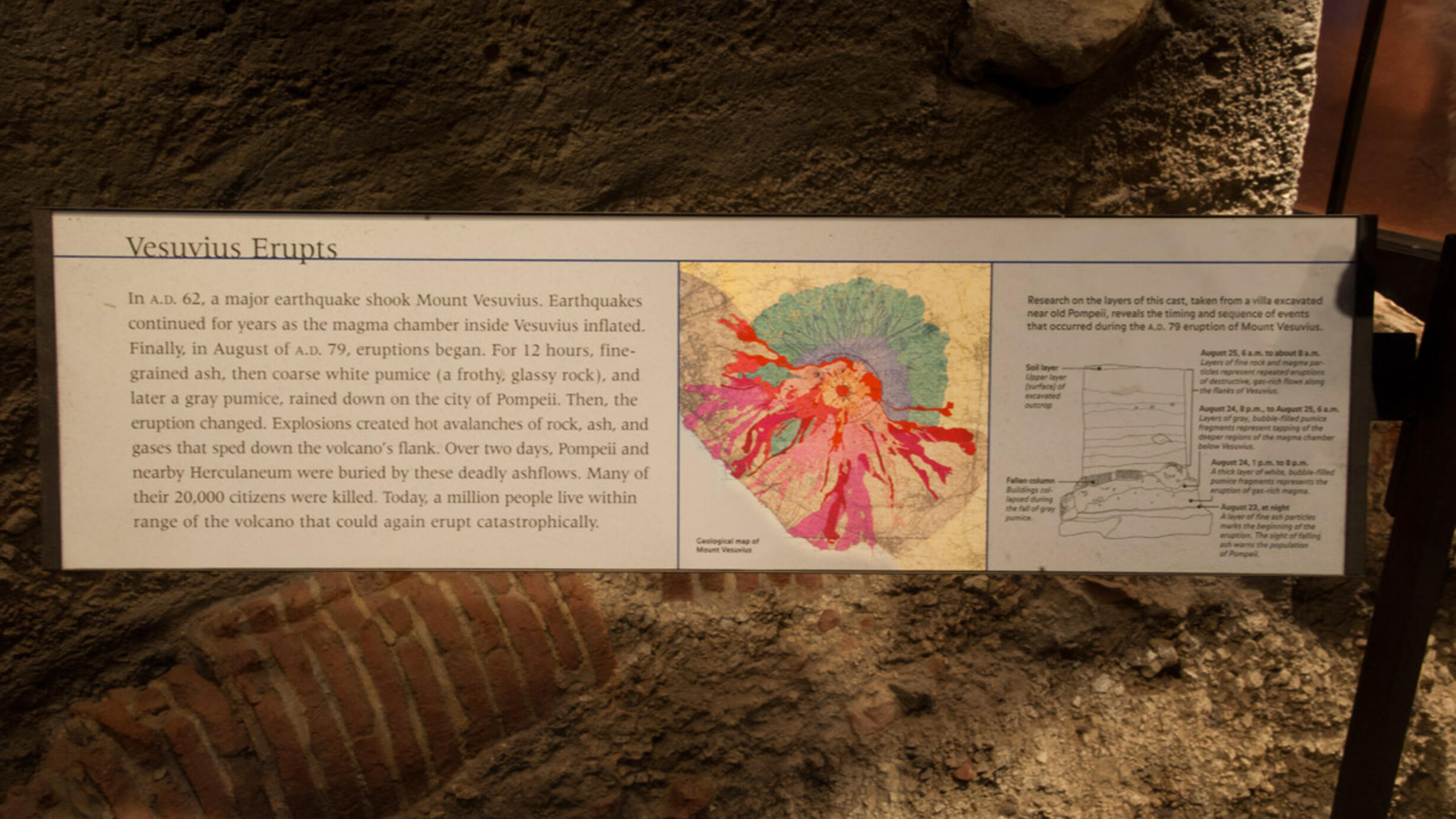Vesuvius erupts
Part of Hall of Planet Earth.
Part of Hall of Planet Earth.
 AMNH/R.Mickens
AMNH/R.Mickens In A.D. 62, a major earthquake shook Mount Vesuvius. Earthquakes continued for years as the magma chamber inside Vesuvius inflated. Finally, in August of A.D. 79, eruptions began. For 12 hours, finegrained ash, then coarse white pumice (a frothy, glass rock), and later a gray pumice, rained down on the city of Pompeii. Then, the eruption changed. Explosions created hot avalanches of rock, ash, and gases that sped down the volcano’s flank. Over two days, Pompeii and nearby Herculaneum were buried by these deadly ashflows. Many of their 20,000 citizens were killed. Today, a million people live within range of the volcano that could again erupt catastrophically.
Cycles of eruption
Volcanic activity in the region around Vesuvius has persisted for 300,000 years, with seven highly explosive eruptions in the last 17,000 years. Vesuvius is a stratovolcano, built up by the layering of successive ash and lava eruptions over time. Its most violent explosions are known as Plinian eruptions (honoring the naturalist Pliny the Elder, who perished in the Vesuvius eruption of A.D. 79). Eruptions occur in cycling lasting tens to hundreds of years of intermittent eruptions, punctuated by periods of quiescence.